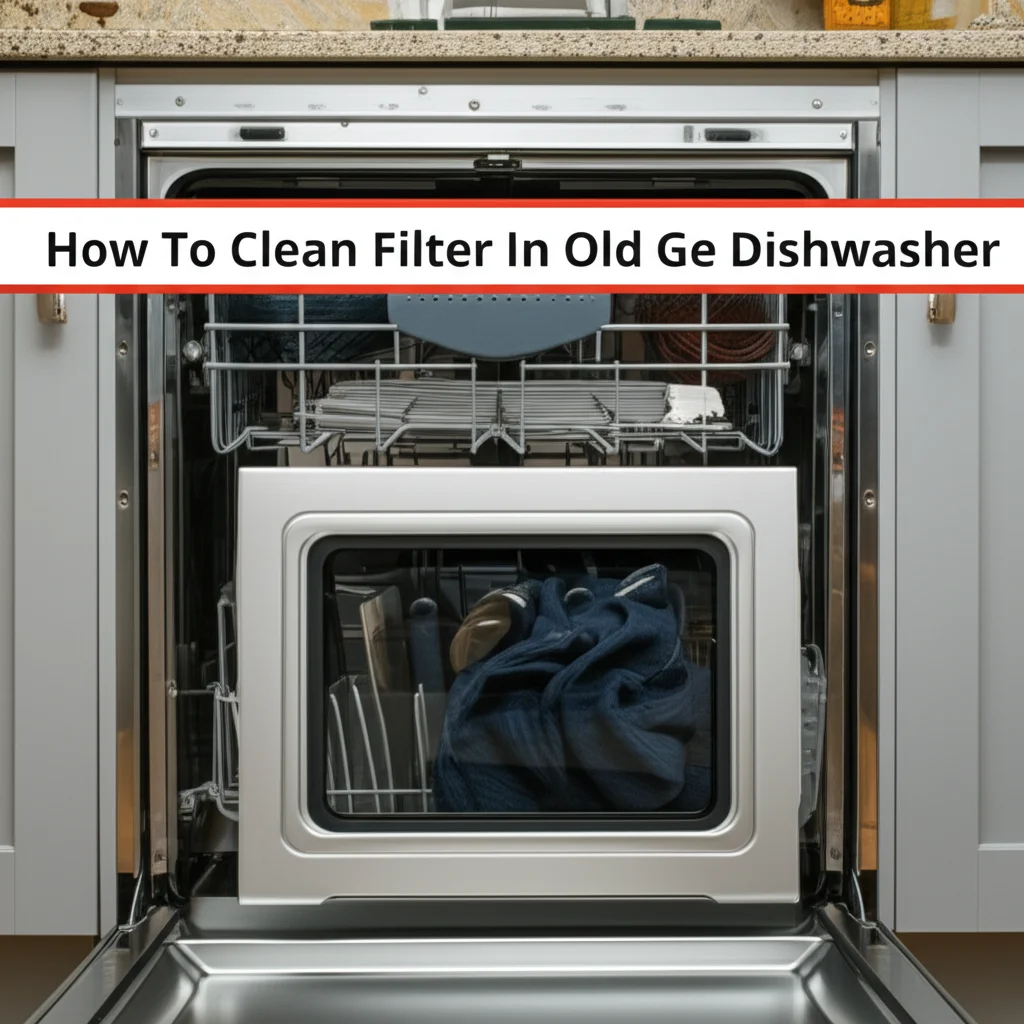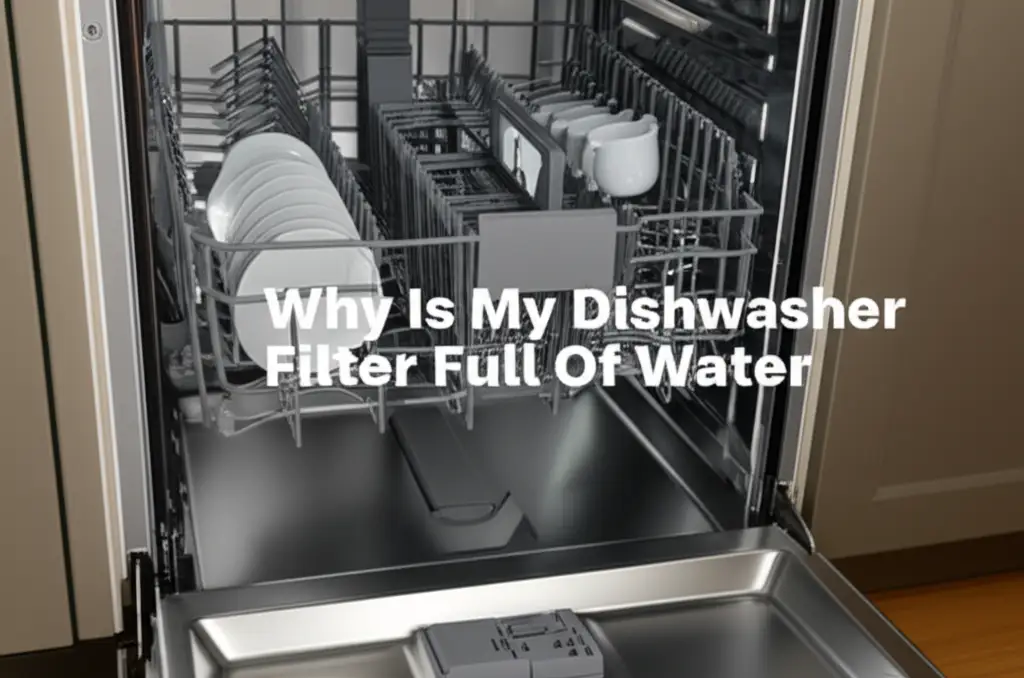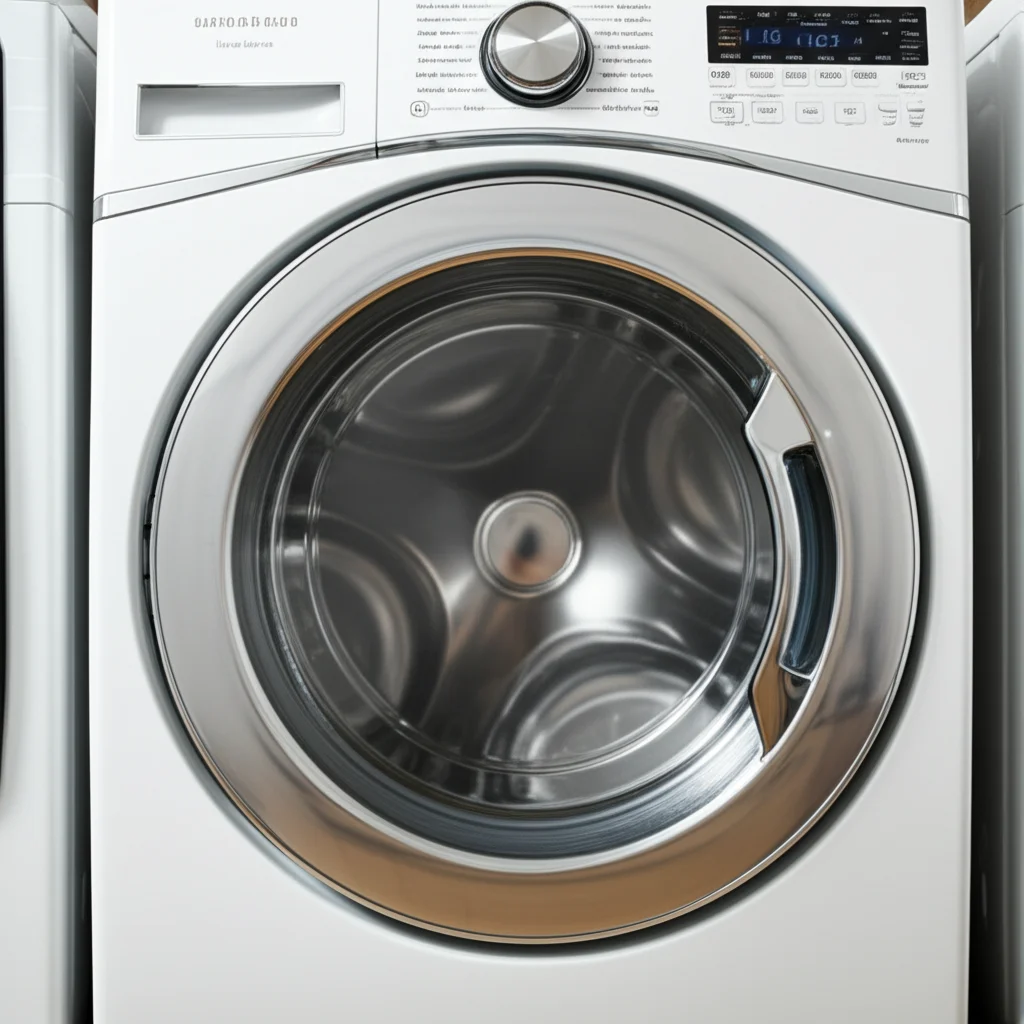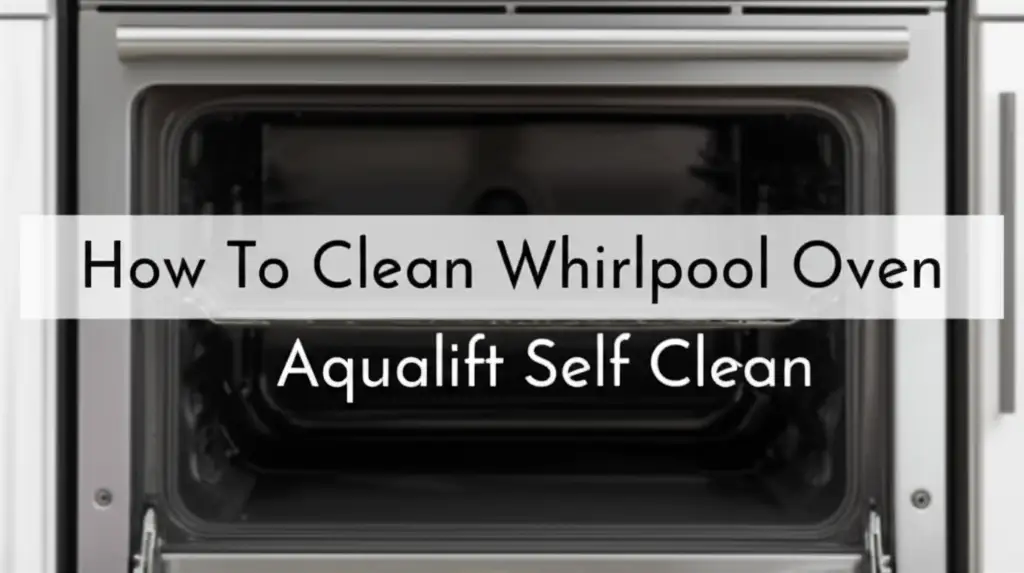· Katria Melrose · Appliance Maintenance · 22 min read
Where Is The Ge Dishwasher Filter Located
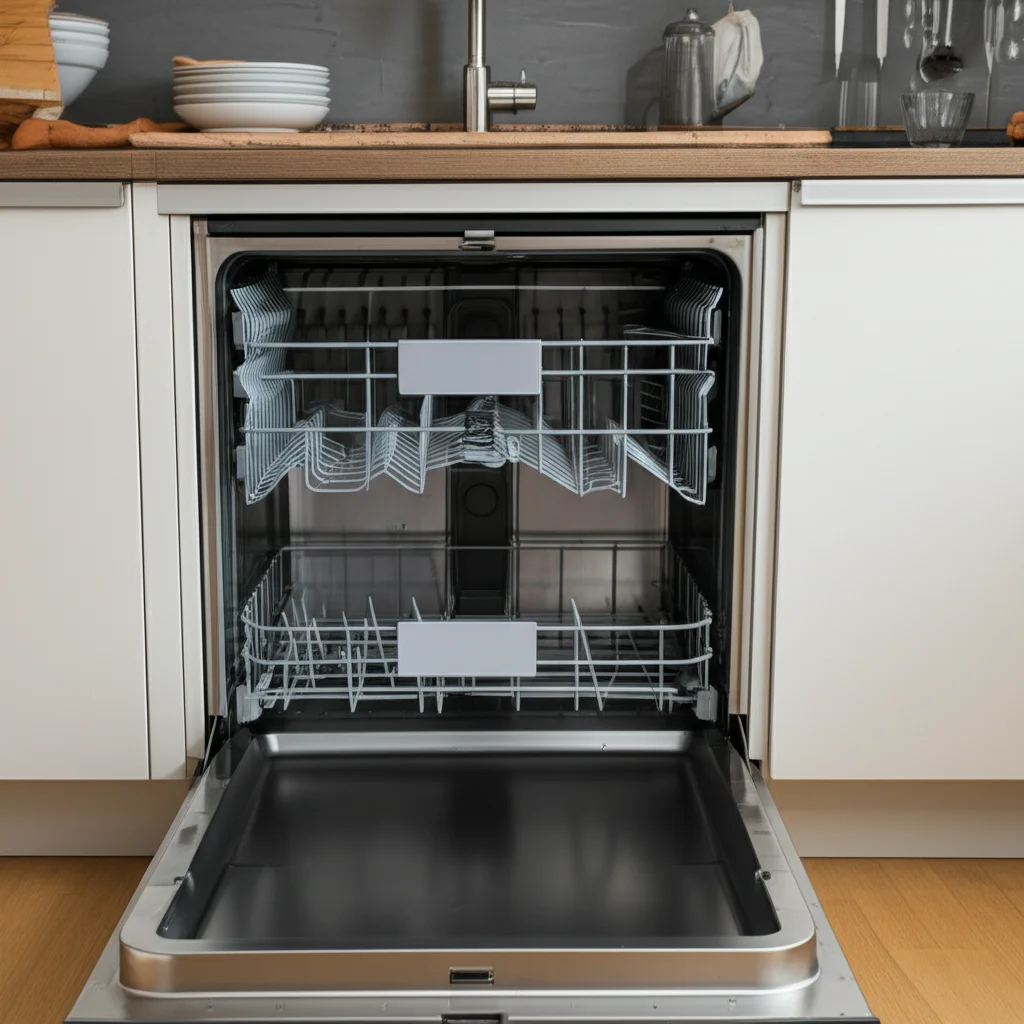
Finding Your GE Dishwasher Filter: Location & Care
Have you ever unloaded your dishwasher expecting gleaming dishes, only to find them still covered in food particles or a cloudy film? This frustrating experience often points to a neglected component: your dishwasher’s filter. Understanding where is the GE dishwasher filter located is the first step toward resolving this common problem. A clean filter is crucial for efficient dishwashing and preventing unpleasant odors inside your appliance.
A dirty filter traps food debris and grease, recirculating them during wash cycles. This leads to poor cleaning performance and potential drainage issues. Regular filter maintenance keeps your GE dishwasher working its best. We will guide you through finding the filter in your specific GE model. We will also cover how to remove it, clean it properly, and maintain it for long-term sparkling results.
Takeaway:
- Locate the GE dishwasher filter at the bottom of the tub, beneath the lower spray arm.
- Identify whether your GE model has a self-cleaning or manual-clean filter.
- Regularly clean the manual-clean filter to prevent food particles and odors.
- Twist or lift the filter components to remove them for cleaning.
- Rinse the filter under running water and use a soft brush for stubborn debris.
The GE dishwasher filter is typically located at the bottom of the dishwasher tub, usually under the lower spray arm. It might be a cylindrical mesh screen or a two-part assembly consisting of a coarse filter and a fine filter. Accessing it requires removing the lower dish rack and then twisting or lifting the filter components to detach them.
Understanding the GE Dishwasher Filter’s Purpose
Your GE dishwasher filter plays a vital role in the cleaning process. It captures food particles, grease, and other debris washed off your dishes. This prevents these larger bits from recirculating and redepositing onto your clean items. The filter ensures that only clean water is sprayed during the wash and rinse cycles.
Without a functioning filter, debris would clog the spray arms and the drain pump. This leads to inefficient cleaning and potential damage to your appliance. A clean filter ensures optimal water flow and proper drainage. It helps your dishwasher perform its primary function: delivering spotless dishes every time.
Many people overlook this small but essential component. However, its maintenance directly impacts the lifespan and effectiveness of your GE dishwasher. Ignoring the filter can cause numerous problems over time. These issues include lingering odors, poor wash results, and even appliance breakdowns.
Proper care for your GE dishwasher filter is a simple task that yields significant benefits. It helps maintain the hygiene of your appliance. It also safeguards your dishes from unwanted residues. You will notice a remarkable difference in performance once your filter is clean.
Identifying Different GE Dishwasher Filter Types
GE dishwashers come with one of two primary filter types: self-cleaning or manual-clean. Knowing which type your model has helps you understand its maintenance needs. Each type functions differently to handle food debris. You need to identify yours before attempting to clean it.
Older GE dishwasher models often feature a self-cleaning filter system. These systems typically use a hard food disposer. The disposer grinds up food particles into smaller pieces. These tiny particles then wash away with the drain water. This means less manual filter cleaning is required by the user.
Newer, quieter GE dishwashers typically use a manual-clean filter system. These systems do not have a hard food disposer. Instead, they rely on a removable filter assembly to trap debris. This design makes the dishwashers much quieter during operation. However, it requires regular manual cleaning from you.
You can often identify your filter type by listening to your dishwasher during a cycle. Self-cleaning models usually produce a distinct grinding noise as they process food. Manual-clean models operate much more quietly, without such a sound. This difference in noise level is a key indicator.
Another way to determine your filter type is by visually inspecting the bottom of the tub. If you see a removable filter assembly, it is a manual-clean type. If the bottom appears solid with no obvious removable parts, it likely has a self-cleaning disposer. Consult your owner’s manual for specific details about your model. Knowing your filter type is the first step toward effective maintenance.
Step-by-Step: Locating the Filter in Your GE Dishwasher
Locating the filter in your GE dishwasher is a straightforward process. It usually involves a few simple steps. The filter is designed for easy access, ensuring you can maintain it without hassle. Follow these instructions to find your filter.
First, open the dishwasher door completely. Pull out the lower dish rack. This gives you clear access to the bottom of the dishwasher tub. You will see the main components at the tub’s base.
Next, look at the very bottom of the dishwasher tub. You will typically find the filter assembly in the center, directly under the lower spray arm. It often looks like a cylindrical component or a flat mesh screen. Its design varies slightly between models.
For most modern GE dishwashers, the filter is a two-part system. There is usually a coarse filter, which is a larger cup-shaped screen. Below or inside this is a fine filter, often a flat mesh screen. Both components work together to trap different sizes of debris.
You might need to rotate the lower spray arm out of the way to get a better view. The filter itself is usually gray or dark plastic. It often has a small handle or an arrow indicating how to twist or lift it. Take a moment to observe its design.
Once you have identified the components, you are ready to remove them. This usually involves a simple twist or lift. The next section will explain how to do this safely. Knowing where the GE dishwasher filter is located prepares you for proper cleaning.
Removing the GE Dishwasher Filter for Cleaning
Removing your GE dishwasher filter is a simple task once you locate it. You do not need any special tools for this process. Follow these steps carefully to detach the filter components safely. Taking care during removal prevents any damage to the filter or the dishwasher.
Begin by ensuring your dishwasher is empty of dishes. Pull out the lower dish rack completely to expose the tub bottom. This provides the space you need to work comfortably. Make sure you have good lighting to see the filter clearly.
Most GE manual-clean filters have a cylindrical coarse filter and a flat fine filter. Start with the coarse filter. It usually has a handle or a raised portion for gripping. Turn it counter-clockwise, typically about a quarter turn, until it unlocks. You should feel a slight click or resistance.
Once unlocked, simply lift the coarse filter straight up and out of the dishwasher. This component often collects larger food scraps. You might see visible debris on its surface. Set it aside for cleaning.
Next, locate the fine filter. This is usually a flat mesh screen positioned beneath where the coarse filter was. Some models require you to lift this screen straight up. Other models might have a small tab or notch you need to push or lift to release it. Be gentle as you remove it.
Carefully lift the fine filter out. This filter traps the smaller particles. You might notice a slimy residue or small food bits on its mesh. These are the particles that cause odors and poor cleaning if left unchecked.
Now you have both filter components ready for cleaning. We are ready to move to the next stage. Knowing how to safely remove them is crucial for effective maintenance. This prepares you for the important task of cleaning.
How to Clean Your GE Dishwasher Filter Effectively
Cleaning your GE dishwasher filter is essential for optimal performance and hygiene. It is a simple process that does not take much time. Regular cleaning prevents odors and ensures your dishes get truly clean. Follow these steps for an effective filter cleaning.
First, take the coarse filter and rinse it thoroughly under warm running water. Use a kitchen brush or an old toothbrush to scrub away any stuck-on food particles or grease. Pay close attention to the mesh and any crevices where debris might hide. You can also use a mild dish soap for stubborn residue.
Next, clean the fine filter. This mesh screen often collects smaller, tougher-to-remove particles. Rinse it under warm running water as well. Use your brush to gently scrub both sides of the mesh. Ensure all visible debris and slimy buildup are gone.
If the filters have a strong odor or persistent grime, you can soak them. Mix warm water with a few drops of dish soap in a bowl. Let the filters soak for 10-15 minutes. This helps loosen stubborn food and break down grease. Then, scrub them again and rinse them thoroughly.
For a deeper clean and to eliminate bacteria, you can also use a vinegar solution. Mix equal parts white vinegar and water. Soak the filters in this solution for about 30 minutes. Vinegar helps sanitize and break down mineral deposits. Always rinse the filters completely after soaking in vinegar. For more general cleaning, you might find it helpful to understand how to clean filter in dishwasher. This can provide additional tips for various filter types.
Once the filters are clean, inspect them for any remaining debris. Hold them up to the light to ensure the mesh is clear. They should be free of any visible food particles or film. A truly clean filter will allow water to pass through freely.
Finally, place the clean fine filter back into its slot at the bottom of the dishwasher tub. Ensure it sits flat and is properly seated. Then, reinsert the coarse filter by aligning its tabs with the slots in the tub. Twist it clockwise until it locks into place. You should feel it click securely.
Properly cleaning your GE dishwasher filter makes a significant difference. It improves cleaning performance and eliminates common issues like odors. Regular attention to this component ensures your dishwasher remains a valuable appliance. For specific models, especially older ones, further guidance on how to clean filter in old GE dishwasher could be useful. This helps address any unique challenges with vintage models.
Common Issues Related to a Clogged GE Dishwasher Filter
A clogged GE dishwasher filter can cause several frustrating issues. These problems directly impact your dishwasher’s performance. Recognizing these signs helps you know when it is time to clean your filter. Ignoring a clogged filter leads to bigger appliance headaches.
The most common sign is dishes that are not getting clean. You might find food particles, grease, or a gritty residue still clinging to your plates and glasses after a cycle. This happens because the dirty filter recirculates debris instead of trapping it. The spray arms push dirty water onto your dishes.
Another frequent issue is unpleasant odors emanating from your dishwasher. Trapped food particles and grease inside the filter begin to rot. This creates a foul, mildew-like smell. The odor can transfer to your dishes, making them seem unclean. If you ever wonder why does my GE dishwasher smell, a clogged filter is often the primary culprit.
Drainage problems can also stem from a clogged filter. While the filter itself does not directly drain water, severe blockages can impede water flow. This can indirectly affect the pump’s ability to clear water properly. This might lead to standing water at the bottom of the tub.
You might also notice unusual noises during the wash cycle. A heavily clogged filter can strain the dishwasher’s pump. This causes it to work harder and produce humming or grinding sounds. These noises are often a warning sign that something is amiss internally.
Over time, a clogged filter can lead to reduced water pressure in the spray arms. This means water is not forcefully reaching all areas of the dishwasher. Dishes in certain spots might remain dirtier than others. This uneven cleaning performance indicates a problem with water circulation.
Addressing these issues promptly prevents further damage to your GE dishwasher. Cleaning the filter often resolves these problems. It restores your dishwasher to its optimal working condition. Regular maintenance prevents these common frustrations from occurring.
Maintaining Your GE Dishwasher Filter for Longevity
Maintaining your GE dishwasher filter goes beyond just cleaning it when problems arise. Regular, preventative maintenance extends the life of your appliance. It also ensures consistent cleaning performance. Incorporate filter care into your routine for best results.
Aim to clean your manual-clean GE dishwasher filter at least once a month. If you frequently wash heavily soiled dishes, or if you have a large family, consider cleaning it every two weeks. This proactive approach prevents severe buildup. It keeps your dishwasher running smoothly.
Before loading dishes, scrape off large food particles into the trash. Pre-rinsing is not always necessary for modern dishwashers, but removing large chunks helps. This reduces the amount of debris the filter needs to trap. Less debris means less work for the filter and less chance of clogging.
Avoid putting items with excessive grease or sticky residues directly into the dishwasher without a quick wipe. These substances can quickly coat the filter mesh. They make it harder for water to pass through. This also makes the filter more challenging to clean later.
Periodically, perform a full deep clean of your entire dishwasher. This includes running a cleaning cycle with a dishwasher cleaner or vinegar and baking soda. This helps remove grease and mineral buildup from the entire system, not just the filter. A clean interior complements a clean filter. For a more comprehensive guide, learn how to clean a dishwasher how to deep. This will address all internal components.
Check the filter for damage during each cleaning. Look for tears in the mesh or cracks in the plastic components. A damaged filter cannot effectively trap debris. It will need replacement if damaged beyond repair.
If your GE dishwasher has a self-cleaning filter, you still have some maintenance tasks. Run a hot cycle with a dishwasher cleaner regularly. This helps break down any small particles that the disposer might miss. It also keeps the internal components clean.
Consistent filter maintenance is a small effort for big rewards. It prevents costly repairs down the line. It also ensures your dishes are always sparkling clean. Your GE dishwasher will thank you for the care.
When to Replace Your GE Dishwasher Filter
While regular cleaning can greatly extend the life of your GE dishwasher filter, it will not last forever. Filters can wear down, develop tears, or become permanently clogged over time. Knowing when to replace your filter is crucial for maintaining your dishwasher’s efficiency. A damaged filter cannot perform its job effectively.
Inspect your filter carefully during each cleaning session. Look for visible signs of wear and tear. This includes rips or holes in the mesh screen. Also check for cracks in the plastic frame or housing. Even small tears can allow food particles to bypass the filter and recirculate.
If you notice a significant decrease in cleaning performance despite regular filter cleaning, it might indicate a worn filter. This is especially true if you are finding more food debris on your dishes than usual. The mesh might be stretched or deformed, reducing its filtering capability.
Another sign it is time for a replacement is if the filter components do not fit together securely. If the coarse filter spins loosely or the fine filter does not seat properly, it could be worn. A loose filter allows unfiltered water to pass through. This can lead to larger debris entering the pump or spray arms.
Sometimes, mineral buildup or hard water deposits can permanently clog the filter. Even after thorough cleaning, some filters might retain a cloudy film or gritty texture. If rinsing and scrubbing do not fully clear the mesh, replacement is the best option. Residual buildup affects water flow and cleaning quality.
If your dishwasher is making new, unusual noises, and you have ruled out other issues, a failing filter could be a cause. A severely compromised filter might allow larger debris to strain the drain pump. This leads to grinding or struggling sounds. These noises are not normal for a well-functioning appliance.
Refer to your GE dishwasher’s owner’s manual for recommended replacement intervals. General guidelines suggest replacing manual-clean filters every 3-5 years, or sooner if visible damage occurs. Always use genuine GE replacement parts to ensure proper fit and function. Replacing a worn filter is a small investment that protects your larger appliance.
Optimizing Dishwasher Performance Beyond the Filter
While the filter is critical, optimizing your GE dishwasher’s performance involves more than just filter care. Several other factors contribute to sparkling clean dishes. Addressing these elements ensures your dishwasher operates at its peak. A holistic approach to maintenance yields the best results.
Firstly, proper loading of your dishwasher is essential. Avoid overcrowding the racks. Dishes need space for water and detergent to reach all surfaces. Do not block the spray arms. Ensure they can rotate freely before starting a cycle. Proper loading prevents uneven cleaning and wasted water.
Use the correct amount and type of dishwasher detergent. Too little detergent will not clean effectively. Too much can leave a residue on dishes. Always use high-quality dishwasher detergent. Pods, gels, or powders each have specific benefits. Check your detergent type.
Hard water can be a significant problem for dishwashers. It leaves mineral deposits, known as limescale, on dishes and internal components. If you have hard water, consider using a rinse aid. Rinse aid helps water sheet off dishes. It prevents spots and film. Some detergents include rinse aid, but extra might be needed for very hard water.
Regularly clean the spray arms. Food particles can get stuck in the small holes of the spray arms. This reduces water pressure and spray effectiveness. Remove the spray arms (if possible) and clear any blockages with a toothpick. You can find out more about maintaining the overall appliance, including elements like the drain, by learning how to clean dishwasher drain.
Occasionally run a cleaning cycle with a specialized dishwasher cleaner. These cleaners target grease buildup, hard water deposits, and odors throughout the entire system. Follow the product instructions for best results. This is different from daily detergent use. For comprehensive interior cleaning, you might also want to consult guides on how to clean the inside of a dishwasher. This ensures no part of your appliance is overlooked.
Check the dishwasher’s drain for any obstructions. Blockages in the drain hose or air gap can prevent proper water drainage. This leaves dirty water in the tub. Clear any visible debris from the drain area. If your dishwasher smells, exploring how to clean a smelly dishwasher can provide targeted solutions.
By combining diligent filter care with these broader maintenance tips, your GE dishwasher will perform its best. You will enjoy consistently clean dishes and a longer-lasting appliance. Proactive care saves you time and money in the long run.
The Role of Water Quality in Dishwasher Performance
Water quality significantly impacts your GE dishwasher’s performance. Hard water, which contains high levels of minerals like calcium and magnesium, is a common culprit for dirty dishes. These minerals can leave a cloudy film on glassware and white spots on dishes. They also contribute to limescale buildup inside your appliance.
Limescale accumulates on heating elements, spray arms, and even your filter. This buildup reduces efficiency and can eventually damage components. It makes it harder for soap to dissolve and clean effectively. Hard water also requires more detergent to achieve the same cleaning power.
If you suspect hard water is an issue, consider a water softener for your home. A whole-house water softener removes minerals from your water supply. This protects all your appliances, not just the dishwasher. It improves the effectiveness of detergents and soaps throughout your home.
Alternatively, you can use dishwasher detergents specifically designed for hard water. These detergents contain special agents to combat mineral deposits. Using a rinse aid is also crucial for hard water areas. Rinse aid prevents water spots and helps dishes dry more efficiently.
Periodically run a cleaning cycle with a descaling agent or white vinegar. This helps dissolve existing mineral buildup inside your dishwasher. Place a cup of white vinegar in a dishwasher-safe bowl on the top rack. Run an empty hot water cycle. Vinegar is a natural descaler and deodorizer.
Ensure your hot water supply to the dishwasher is adequate. Dishwashers clean best with hot water. The recommended temperature is usually around 120 degrees Fahrenheit. Check your water heater settings if your dishes are not getting clean. Cold water does not activate detergents properly.
Understanding your water quality helps you tailor your dishwasher care routine. Adjusting detergent use, adding rinse aid, and periodic descaling are vital. These steps complement filter maintenance for spotless dishes. Optimal water quality means a more efficient and long-lasting dishwasher.
Troubleshooting Filter-Related Dishwasher Problems
Even with regular cleaning, you might occasionally encounter issues related to your GE dishwasher filter. Knowing how to troubleshoot these problems can save you a service call. Many common issues have simple, filter-related solutions. Do not immediately assume a major breakdown.
If your dishes are not drying properly, a clogged filter could be an indirect cause. While the filter itself doesn’t directly dry dishes, reduced water circulation and poor cleaning due to a dirty filter can impact the final rinse. This leaves excess moisture or residue on dishes. Ensure the filter is spotless, then check your rinse aid dispenser.
Excessive suds or detergent residue can also indicate a filter problem. If the filter is severely clogged, water might not drain away effectively. This can cause detergent to linger and over-suds during the next cycle. Always use proper dishwasher detergent, not hand dish soap. Using too much hand soap in a dishwasher can lead to significant sudsing, a common mistake.
If your dishwasher stops mid-cycle, especially during the drain phase, check the filter first. A heavily clogged filter can impede the drain pump’s ability to push water out. The dishwasher might stop to prevent overflow or damage. Clearing the blockage might resolve this immediately. For persistent drainage issues, you may need to learn how to get the dishwasher to drain. This guide provides additional steps beyond filter cleaning.
A “food re-deposit” issue is a clear sign of a dirty or improperly seated filter. This is when food particles that should have been flushed away end up sticking back onto your “clean” dishes. Re-examine the filter to ensure it is clean and correctly installed. A loose filter will allow debris to bypass.
If you experience these problems, always start your troubleshooting with the filter. Remove it, clean it thoroughly, and re-install it carefully. Ensure it is locked securely in place. Often, this simple step resolves many performance issues. If the problem persists, then consider other components or professional help. Taking this systematic approach helps you efficiently diagnose and resolve dishwasher woes.
FAQ Section
How often should I clean my GE dishwasher filter? You should clean your manual-clean GE dishwasher filter at least once a month. If you wash heavily soiled dishes or have a large family, consider cleaning it every two weeks. Regular cleaning prevents food buildup and maintains optimal cleaning performance. Self-cleaning models require less direct filter attention.
Can I run my GE dishwasher without the filter? No, you should never run your GE dishwasher without the filter in place. The filter protects the drain pump and other internal components from large food particles and debris. Running it without the filter can lead to clogs in the spray arms, damage to the pump, and expensive repairs.
What are signs of a clogged GE dishwasher filter? Common signs of a clogged GE dishwasher filter include dishes not getting clean, food particles remaining on dishes after a cycle, unpleasant odors from the dishwasher, or standing water in the tub. You might also notice unusual grinding or humming noises during operation. These indicate the filter is struggling.
Do all GE dishwashers have the same filter type/location? Most modern GE dishwashers use a manual-clean filter located at the bottom center of the tub, under the lower spray arm. Older GE models might have a self-cleaning filter system with a hard food disposer. The exact design and removal method can vary slightly, so always refer to your owner’s manual.
Is dishwasher filter cleaning messy? Cleaning a dishwasher filter can be a bit messy, as you are dealing with trapped food particles and greasy residue. However, it is a quick process. Rinse the filter under running water in your sink. Use a brush to scrub away debris. Wearing gloves can make the process less unpleasant.
Can a dirty filter cause my dishwasher to smell? Yes, a dirty or clogged dishwasher filter is a primary cause of foul odors. Trapped food particles and grease decompose over time, creating a mildew-like or rotten smell inside the dishwasher. Regular filter cleaning is essential to prevent these unpleasant smells and keep your appliance fresh.
Conclusion
Understanding where is the GE dishwasher filter located is a foundational step in effective home appliance maintenance. This small but vital component, typically found at the bottom of your dishwasher tub beneath the lower spray arm, plays a critical role in ensuring your dishes emerge sparkling clean after every wash. Neglecting the filter can lead to common frustrations like dirty dishes, unpleasant odors, and even appliance malfunctions.
We have explored the different types of GE dishwasher filters, how to locate and remove them, and the best practices for thorough cleaning. We also covered common issues linked to clogged filters and emphasized the importance of regular maintenance for the longevity of your appliance.
Remember, a clean filter is key to preventing re-deposited food particles and maintaining efficient water circulation. By incorporating these simple filter care steps into your routine, you are not just cleaning a part; you are preserving the performance and lifespan of your GE dishwasher. Take a moment to check your filter today and ensure your dishes always achieve that perfect, spotless shine.


